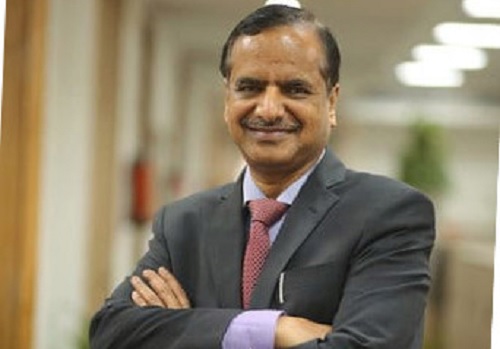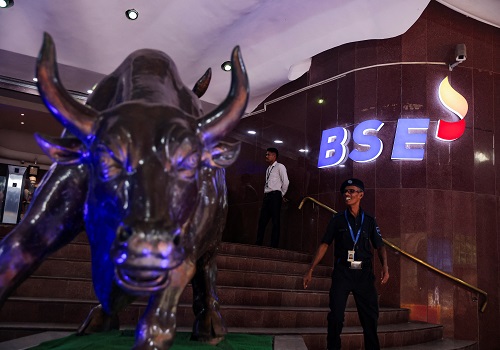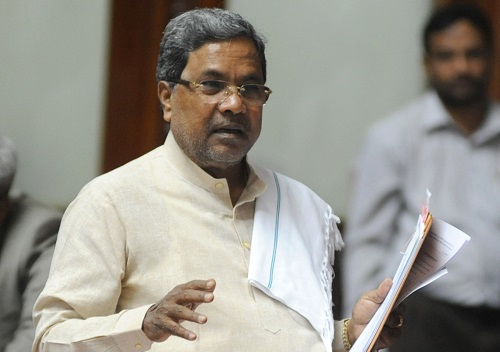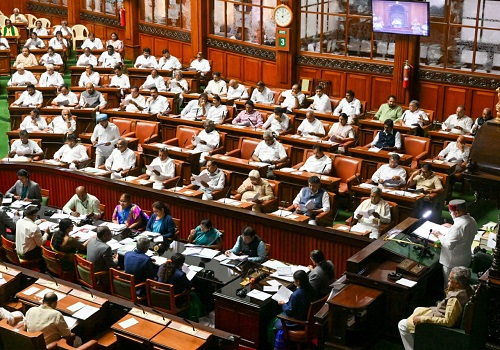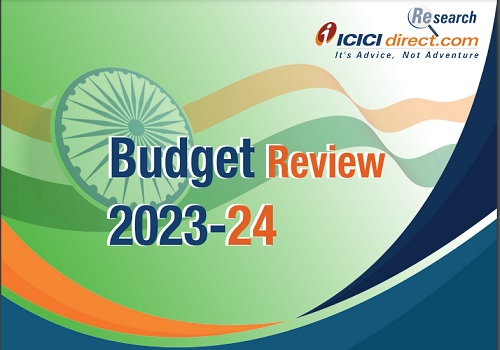Post Budget Impact Analysis 2021 - HDFC Securities
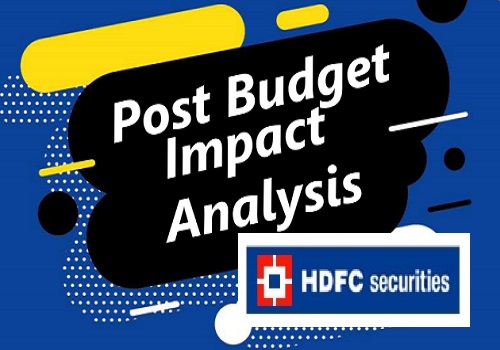
Follow us Now on Telegram ! Get daily 10 - 12 important updates on Business, Finance and Investment. Join our Telegram Channel
https://t.me/InvestmentGuruIndiacom
Download Telegram App before Joining the Channel
Post Budget Impact Analysis 2021
* In the backdrop of the numerous challenges that the finance minister faced, the Union Budget presented by her on Feb 01 is path-breaking to quite an extent. The FM continued on the Govt.’s prudent path avoiding populism. The effort is clearly attempting to spur the economic growth on a faster path by upping spending on schemes/areas which have a multiplier effect. The Budget’s task was to push the long-term growth trajectory up. A virtuous spending cycle may be triggered by these provisions that could lift the rate of growth for the economy and businesses.
* No material changes to direct or indirect tax rates or provisions are welcome from a tax payer perspective who seeks stability in the tax regime.
* Raising taxes to fund expenditure would have invalidated the expansionary effect of the spending. The only option was to keep the fiscal deficit high -- that is borrow to spend. Rising debt levels run the risk of a being a long term strain on the economy. So, the FM had to take a gamble on letting borrowings swell in the near term in the hope that the economic growth it drives leads to sustainable consolidation of debt.
* The deficit target of 6.8 per cent for 2021-22 (way higher than most forecasts) and the target reduction of fiscal deficit to below 4.5 per cent only in 2025-26 is perhaps as bold as expansionary fiscal policy can get. The previous target of 3% fiscal deficit (laid out in FRBM Act) now seems to have been abandoned.
* However a significant portion of an increase in spending comes from taking on the food subsidy bill on the Budget instead of financing FCI (Food Corporation of India) via the NSSF (National Small Savings Fund) (impact 0.56% of GDP in FY20).
* The Budget has been realistic in projecting revenues. On a 14.4% growth in nominal GDP, gross tax revenue is projected to grow at 16.7%. Capital expenditure is budgeted to rise by 34.5% next year. Make-in-India push continues with addition to PLI scheme and proposal for mega Textile park. FY22 Budget targets a huge infrastructure push, with capex increasing to 2.5% of GDP compared to FY21 BE of 1.8% and revised estimate for FY21 of 2.3% of GDP. The revenue spending is budgeted lower at 13.1% of GDP, compared to 15.5% of GDP in FY21 RE.
* The raising of FDI limit in insurance sector from 49% to 74% could trigger further inflows in the sector and a mild rerating.
* A well-capitalized Development Finance Institution (DFI) has been set up to garner and channel private (including external) funds to infra projects. A National Monetization pipeline has been set up to sell a variety of existing infra-assets (Dedicated Freight corridor, Airports, Roads/Highways, Pipelines, Transmission assets etc) to fund the creation of new assets. It remains to be seen how effectively these new structures can improve the risk appetite for infra projects.
* A key announcement for the banking sector that addresses the issue of bad loans is the creation of an Asset Reconstruction and Management Company that will function as a “bad bank”. This would give banks the much needed room to focus on core activities instead of fretting over their impaired loans and also speed up the process of liquidation.
* The Budget, as usual, relies on disinvestment and asset monetization for resources. This has always been an area of concern since actual receipts have almost always fallen short of targets. The government, for example, now has a policy of selling all PSUs in non-strategic sectors and keeping the number of PSUs in four strategic sectors to a bare minimum. The FM seems confident that the four PSUs including Air India and BPCL that were scheduled for strategic sale this year will finally be sold off next year. Also the IPO for LIC and a Special Purpose Vehicle to sell surplus land finds place in the budget speech. Also the use of the word “Privatisation” in the Budget speech vs “Divestment” hitherto signals Govt.’s seriousness in going for strategic sales.
* The Rs. 80,000 crores extra borrowing for FY21 is a negative surprise for the bond market. Even for FY22, the bond market has been broadly working with a gross borrowing number between Rs. 10.5 – 11 lakh crores and the Rs. 12 lakh crores in the budget is higher than expected.
* The unexpectedly large fiscal deficit numbers both for the current and the next year entail huge borrowings, much beyond market expectations. Government bond yields have hardened quite a bit in the wake of the recovery. The Finance ministry and the RBI will have to work closely together to check the rise in yields and ensure that the budget doesn’t ultimately result in a rise in borrowing costs across the board. We think the RBI will continue with its yield management tools (perhaps more of Operation twists compared to plain vanilla OMOs due to liquidity concerns) to keep borrowing costs under check.
* The reaction of the FPIs and international rating agencies to the fiscal deficit estimates will be keenly watched. The increase in absolute fiscal deficit from Rs.9.33 lakh cr in FY20 to Rs.15.06 lakh cr in FY22 could lead to demand push inflation if the supply side constraints are not addressed. This could lead to gradually rising interest rates. However given the fact that most economies are undergoing similar expansionary phase due to Covid-19, these agencies may not be harsh on India immediately. Also the general government approach of being consistent and sustainable with its fiscal response, will serve to better instead of worsen offshore perception of local Indian assets.
* Markets have reacted well to the provisions of the Union Budget with the Sensex witnessing the best Budget day performance since 1997. While some of this rise can be attributed to immediate knee jerk positive reaction, some portion may be due to short covering. We will know the real impact on the equity markets only once the FPI flows reflect their reaction to the Budget provisions. While recovering global markets are supportive to the Indian market trajectory, continued fund inflows are a pre requisite for the Nifty to sustain/rise from these levels. While the immediate bullish reaction may peak out over today/tomorrow, a new high on the Nifty will require FPIs to remain excited on the Indian story over the medium term.
Changes to Direct Taxes:
* The maturity proceeds of ULIP policies with an annual premium of more than Rs 2.5 lakh will be taxable on par with equity-linked mutual fund schemes for ULIPs taken on or after Feb 1, 2021. However, the amount received on death shall continue to remain exempt without any limit on the annual premium.
* It is proposed to levy of TDS on Purchase of Goods @ 0.1% on a purchase transaction exceeding Rs 50 lakh in a year. The responsibility of deduction shall lie only on the persons whose turnover exceeds Rs 10 crore. This provision is intended to widen the tax net.
* The 'tax audit limit' under Section 44AB has been increased from Rs.5 crores to Rs.10 crores where 95% of business transactions are done in digital mode.
* It has been proposed to reduce the time-limit for re-opening of assessment to 3 years from the present 6 years.
* On late deposit of Provident funds, superannuation funds, and other social security funds by the employer, it will not be allowed as deduction to the employer.
* Additional deduction of interest, amounting to Rs 1.5 lakh, for loan taken to purchase an affordable house is proposed to be extended by one more year to 31st March 2022. The additional deduction of Rs 1.5 lakh shall therefore be available for loans taken up till 31st March 2022, for the purchase of an affordable house.
* Interest earned on annual PF contribution by an employee exceeding 2.5 lacs in a year from April 2021 will now be taxable.
* Introduction of pre-filled Income-Tax Return (ITR) forms for taxpayers with data on their capital gains from mutual funds, shares, dividend income and interest received from banks.
Complete Report & Disclaimer Click Here
Please refer disclaimer at https://www.hdfcsec.com/article/disclaimer-1795
SEBI Registration number is INZ000171337
Above views are of the author and not of the website kindly read disclaimer
